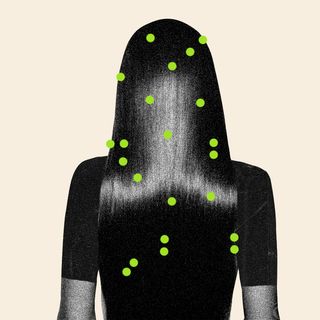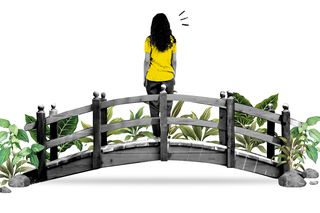
How Unequal Access to Green Space Impacts Health
Social and economic inequalities ensure that green spaces are appropriated by a few — despite the health benefits they can offer to many.

With rapid urbanization, the rising population in cities and towns results in a shrinking of usable, natural spaces. Coupled with the effects of inequality, natural green spaces — and the health benefits they offer — are distributed unequally too, leading to public health injustice.
The latest study to link natural spaces and public health suggests increasing such spaces and private gardens has the potential to reduce lifespan gaps between those living in rich and poor areas. The study adds to growing evidence of the benefits of green spaces on people’sphysical and mental health. However, the persistent problem of unequal access to green spaces, especially in urban areas, leads to several disadvantaged communities losing out on these proposed health benefits.
Access to public parks, private gardens, urban forests and even tree-lined streets is further complicated, and defined, by socio-economic and demographic inequalities, leading to these benefits accruing to a specific subset of the urban population – particularly, the wealthy and affluent. Just like natural spaces, environmental risks too are unequally distributed, with marginalized communities residing in underprivileged neighborhoods bearing the burden of greater contamination of water, poorer air quality and a higher risk of hazards. Increasing green spaces as a possible public health measure, then, raises questions around how our cities are planned and who has access to these areas.
Racial, social and economic disparities play a role in determining the distribution of green spaces in urban areas across the world. A European Environment Agency briefing noted that the degree of greening varied across neighborhoods in European cities, with lesser and lower quality green space found near residences of communities with lower socio-economic status, lower levels of education and higher rates of unemployment. This inequality in access becomes more pronounced in the Global South, where it’s almost twice that of Global North cities, according to research published in the journal Nature Communications earlier this year.
This makes the latest study’s findings all the more jarring. Published in the Journal of Epidemiology of Community Health, the study found that for every 10% increase in natural space, there is a 7% decline in the incidence of premature death among people under 65 years of age. They also found that areas with the highest income deprivation had the lowest average percentage of gardens and natural space coverage. These poorer areas were also the ones with the highest rates of illness.
Related on The Swaddle:
Living Near Green Spaces May Reduce PMS Symptoms, Research Shows
The researchers identified several gaps in the study which could have influenced their findings, including a lack of information on individual lifestyle behavior, personal economic circumstances, the quality of natural spaces available and how much people used them. This being an observational study, they further pointed out that cause and effect cannot be established.
Still, their findings are in tune with other studies and highlight the importance of natural spaces in any developmental planning. The researchers found that even moderate levels of natural (blue and green) space could make a difference.
Mounting evidence suggests that green spaces have several health benefits – from combating loneliness, mitigating risks of cardiovascular diseases to improving mental health, even reducing the risk of developing psychiatric disorders. WHO, in a briefing on urban green spaces, stated, “Everyone can benefit from urban green space interventions, but they can be of particular relevance for socially disadvantaged or underserved community groups, which often have least access to high-quality green spaces.”
Related on The Swaddle:
More Green Spaces in Cities Could Help Prevent Early Deaths, According to Research
These natural spaces remain concentrated in wealthier districts, restricting access of disadvantaged communities. The question of safety further limits women’s access to public green spaces. In Delhi, this disparity becomes especially apparent in informal urban settlements or densely-packed slums where a third of the city’s population reside. The capital city reportedly has 18,000 parks and gardens, but they are unevenly distributed with a majority being concentrated in just five districts. The posh area of South Delhi, where many affluent families reside, topped the list with the most parks while the congested region of north-east Delhi had the fewest.
What follows is a gentrification of natural spaces, visible in the planning of restoration efforts as well as in who receives the positive health benefits that arise. Ensuring equal access to quality green spaces requires making this problem central to design and planning efforts. Some researchers suggest tree-lined streets and construction of pocket parks as ways to address this disparity. Others highlighted the importance of community engagement in designing inclusive spaces.
Acknowledging the inequality in access, the need for public green spaces has also been enshrined in the UN’s Sustainable Development Goals. SDG 11.7 sets the target to provide universal access to safe, inclusive and accessible, green and public spaces by 2030, particularly for women, children, the elderly and persons with disabilities.
As an editorial on the latest study reportedly noted, if the link between natural space and a decrease in health inequity is proven to be true, then it could “provide an additional public-health tool to reduce the large health inequities that exist for deprived populations, indigenous peoples, and other ethnic minorities.”
Ananya Singh is a Senior Staff Writer at TheSwaddle. She has previously worked as a journalist, researcher and copy editor. Her work explores the intersection of environment, gender and health, with a focus on social and climate justice.
Related


Why Is Having a Foot Fetish Taboo?
